Treatment cost
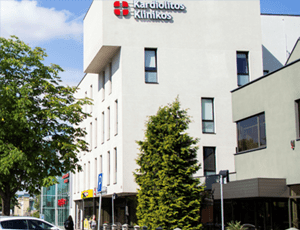
Apart from in-detail treatment procedures available, Kardiolita Hospital, Kaunas located in Kaunas, Lithuania has a wide variety of facilities available for International Patients. Some of the facilities which are provided by them are Accommodation, Airport Transfer, Choice of Meals. Also listed below are some of the most prominent infrastructural details:

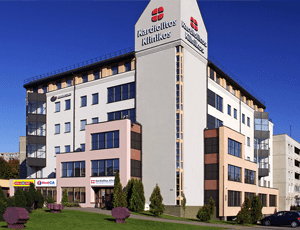
Kardiolita Hospital, Vilnius located in Vilnius, Lithuania is accredited by JCI. Also listed below are some of the most prominent infrastructural details:
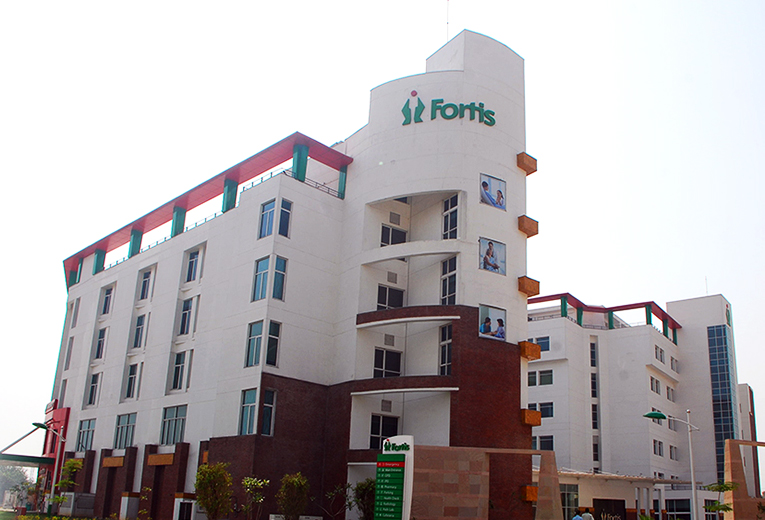
Types of VSD Closure / Repair (Adult) & Its Cost at Fortis Hospital, Shalimar Bagh
| Treatment Option | Approximate Cost Range (USD) | Approximate Cost Range (INR) |
|---|---|---|
| Surgical VSD Closure | 4,000 - 6,000 | 328000 - 492000 |
| Transcatheter VSD Closure | 5,000 - 7,000 | 410000 - 574000 |
| Hybrid VSD Closure | 5,500 - 7,500 | 451000 - 615000 |
| Robotic-assisted VSD Closure | 6,000 - 8,000 | 492000 - 656000 |
Factors affecting VSD Closure / Repair (Adult) cost in Fortis Hospital, Shalimar Bagh
| Cost Factors | Cost Range (USD) | Cost Range (INR) |
|---|---|---|
| Initial Consultation Fees | 100 - 300 | 8200 - 24600 |
| Surgeon Fees | 1,000 - 2,000 | 82000 - 164000 |
| Medications | 200 - 500 | 16400 - 41000 |
| Anesthesia Charges | 500 - 1,000 | 41000 - 82000 |
| Operating Room Fees | 1,000 - 2,000 | 82000 - 164000 |
| Recovery Room Charges | 300 - 700 | 24600 - 57400 |
| Intensive Care Unit (ICU) Charges | 1,000 - 2,000 | 82000 - 164000 |
| Supplies and Medications | 200 - 500 | 16400 - 41000 |
| Room Charges (Per Day) | 100 - 300 | 8200 - 24600 |
| Administrative Fees | 100 - 300 | 8200 - 24600 |
Types of VSD Closure / Repair (Adult) & Its Cost at Aakash Healthcare Super Speciality Hospital
| Treatment Option | Approximate Cost Range (USD) | Approximate Cost Range (INR) |
|---|---|---|
| Surgical VSD Closure | 6000 - 7000 | 492000 - 574000 |
| Transcatheter VSD Closure | 5500 - 6500 | 451000 - 533000 |
| Hybrid VSD Closure | 6500 - 7500 | 533000 - 615000 |
| Robotic-assisted VSD Closure | 7000 - 8000 | 574000 - 656000 |
Factors affecting VSD Closure / Repair (Adult) cost in Aakash Healthcare Super Speciality Hospital
| Cost Factors | Cost Range (USD) | Cost Range (INR) |
|---|---|---|
| Initial Consultation Fees | 100 - 150 | 8200 - 12300 |
| Surgeon Fees | 800 - 1000 | 65600 - 82000 |
| Medications | 100 - 200 | 8200 - 16400 |
| Anesthesia Charges | 500 - 800 | 41000 - 65600 |
| Operating Room Fees | 600 - 900 | 49200 - 73800 |
| Recovery Room Charges | 300 - 500 | 24600 - 41000 |
| Intensive Care Unit Charges | 800 - 1200 | 65600 - 98400 |
| Supplies and Medications | 200 - 300 | 16400 - 24600 |
| Room Charges (Per Day) | 150 - 200 | 12300 - 16400 |
| Administrative Fees | 100 - 150 | 8200 - 12300 |
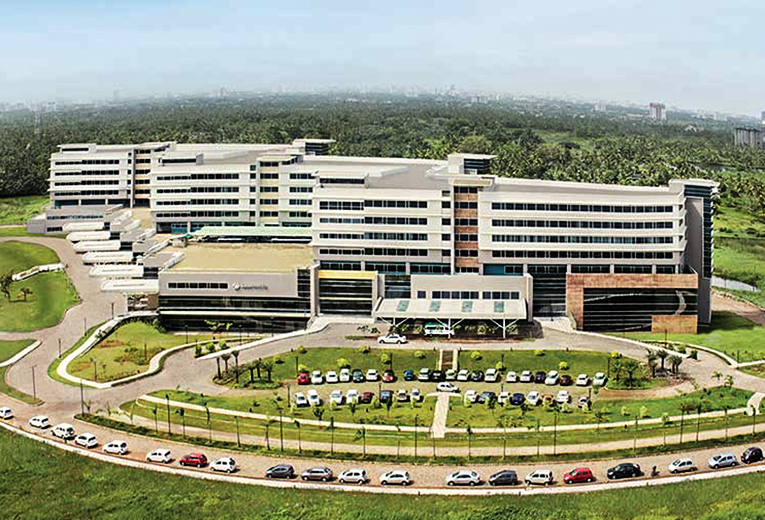
Types of VSD Closure / Repair (Adult) in Aster Medcity and its associated cost
| Treatment Option | Approximate Cost Range (USD) | Approximate Cost Range (INR) |
|---|---|---|
| VSD (Overall) | 5065 - 12139 | 416931 - 1001784 |
| Primary Surgical Closure | 5091 - 8132 | 416421 - 669049 |
| Patch Repair | 6103 - 10187 | 499501 - 830095 |
| Transcatheter VSD Closure | 7125 - 12202 | 585335 - 998269 |
Types of VSD Closure / Repair (Adult) in Pushpawati Singhania Research Institute and its associated cost
| Treatment Option | Approximate Cost Range (USD) | Approximate Cost Range (INR) |
|---|---|---|
| VSD (Overall) | 5088 - 12144 | 418088 - 1003332 |
| Primary Surgical Closure | 5090 - 8090 | 416217 - 667513 |
| Patch Repair | 6091 - 10173 | 498370 - 832204 |
| Transcatheter VSD Closure | 7081 - 12226 | 585281 - 994548 |
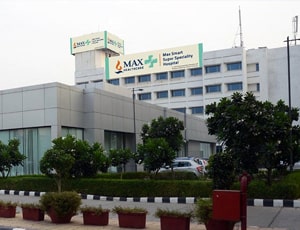
Types of VSD Closure / Repair (Adult) in Max Smart Super Speciality Hospital and its associated cost
| Treatment Option | Approximate Cost Range (USD) | Approximate Cost Range (INR) |
|---|---|---|
| VSD (Overall) | 5059 - 12131 | 414539 - 998357 |
| Primary Surgical Closure | 5066 - 8097 | 417434 - 667004 |
| Patch Repair | 6100 - 10102 | 500558 - 829851 |
| Transcatheter VSD Closure | 7109 - 12226 | 580152 - 999244 |

Types of VSD Closure / Repair (Adult) in Thumbay University Hospital, Ajman and its associated cost
| Treatment Option | Approximate Cost Range (USD) | Approximate Cost Range (AED) |
|---|---|---|
| VSD (Overall) | 12112 - 21661 | 45227 - 78171 |
| Primary Surgical Closure | 12526 - 17634 | 44544 - 65547 |
| Patch Repair | 13602 - 20624 | 48521 - 74733 |
| Transcatheter VSD Closure | 14726 - 21683 | 53777 - 79288 |
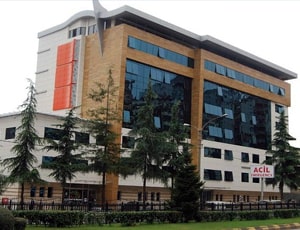
Types of VSD Closure / Repair (Adult) in Medical Park Karadeniz Hospital and its associated cost
| Treatment Option | Approximate Cost Range (USD) | Approximate Cost Range (TRY) |
|---|---|---|
| VSD (Overall) | 5554 - 13711 | 167432 - 401915 |
| Primary Surgical Closure | 5946 - 9215 | 182951 - 276018 |
| Primary Surgical Closure | 7389 - 11025 | 215504 - 335502 |
| Transcatheter VSD Closure | 8317 - 13243 | 250557 - 405312 |
Types of VSD Closure / Repair (Adult) in Max Super Specialty Hospital, Shalimar Bagh and its associated cost
| Treatment Option | Approximate Cost Range (USD) | Approximate Cost Range (INR) |
|---|---|---|
| VSD (Overall) | 5059 - 12155 | 415577 - 999134 |
| Primary Surgical Closure | 5052 - 8129 | 418056 - 663494 |
| Patch Repair | 6113 - 10141 | 501041 - 834478 |
| Transcatheter VSD Closure | 7096 - 12141 | 584754 - 998262 |
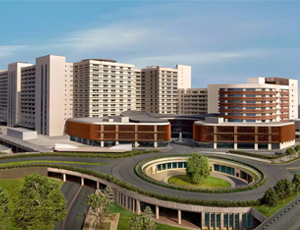
The Amrita Institute of Medical Sciences and Research Centre was established in 1998 by Mata Amritababdamayi Devi. It has 7 branches all over India and is accredited by ISO, NABH, and NABL. The hospitals offer a wide range of specialty and primary healthcare and medical services. It has a team of 800 doctors along with 2600 plus beds including 534 critical care beds and 81 specialties. The hospitals offer advanced and cutting-edge medical treatments ranging from cardiac sciences to radiation oncology. It has 12 super-specialty departments along with 45 other departments.
Asia’s first Bilateral Hand Transplant Surgery was done at Amrita Hospital, Kochi, in 2015. Many awards have been received by the hospitals such as National Healthcare Excellence Award for Best Hospital (CSR Category) in India by FICCI in 2013, India Healthcare Award for the Paediatric Heart Program in 2014, British Medical Journal Award for the Best Surgical Team in South Asia, 2015, and FICCI Healthcare Excellence Awards for Patient Safety and Innovation in Medical Technology. What truly sets the medical services provided by AIMS is the commitment to treating every patient with the utmost kindness, respect, and empathy. The goal is to make patients empowered and take charge of their well-being through healthcare, medical technologies, and education that is patient-centric for early intervention and prevention.
Amrita Hospital in Faridabad is a multispeciality hospital that provides patients with emergency, consultation, diagnostic, rehabilitative treatment, and recovery. It comprises centers for Radiation Oncology, Neurosciences, Bone diseases, Gastro-sciences, Mother and Child care, Cardiac sciences, and Trauma transplants through fully-automated innovative laboratories, the latest cardiac and cath labs, and advanced medical imaging. It houses 670 faculty members, 4500 supporting staff, and a multidisciplinary children’s infirmary with fetal and maternal medicines and pediatric subspecialties. The hospital also runs India’s most comprehensive facility for infectious diseases.
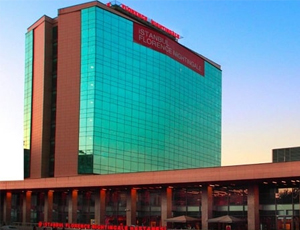
The first green hospital in Turkey, Istanbul Florence Nightingale Hospital, was inaugurated in 2013. Group The Florence Nightingale hospitals are the first Turkish hospitals to be granted Joint Commission International (JCI) accreditation, and they continue to be associated and work with esteemed healthcare organizations.
The Florence Nightingale Group treats 250,000 outpatients and 70,000 inpatients annually, demonstrating its excellence. The hospitals have a capacity of 804 inpatient beds, 141 ICU beds, and 40 operating rooms, and perform 20,000+ procedures annually, of which 1,000 are cardiac operations for children and 2,000 are for adults. For conducting difficult orthopedic, general surgery, minimally invasive, and other heart treatments, the facility stands out. All operating rooms can be interconnected by audio-visual to a 300-person conference room and global hubs, enabling interactive medical teaching and scientific activity.
Interpreter and translator services for languages such as Turkish, Azerbaijani, Bulgarian, Arabic, English, Persian, Serbian, Russian, Albanian, Macedonian, German, Bosnian, and Romanian are available.
The hospital has specialized departments such as Cardiology and Cardiac Surgery, IVF and Infertility, Nephrology, Oncology and Oncosurgery, Spine Surgery, Neurology and Neurosurgery, Orthopedics, Gynecology, and Obesity or Bariatric Surgery. With an extensively qualified and experienced team of advisors and interpreters, Florence Nightingale Istanbul is committed to providing one-stop service from beginning to end, 24 hours a day, 7 days a week.
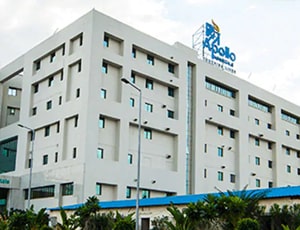
Types of VSD Closure / Repair (Adult) in Apollo Hospital and its associated cost
| Treatment Option | Approximate Cost Range (USD) | Approximate Cost Range (INR) |
|---|---|---|
| VSD (Overall) | 5590 - 13680 | 454109 - 1128034 |
| Primary Surgical Closure | 5662 - 8904 | 465350 - 746643 |
| Patch Repair | 6656 - 11365 | 559580 - 917771 |
| Transcatheter VSD Closure | 7961 - 13592 | 636805 - 1083921 |
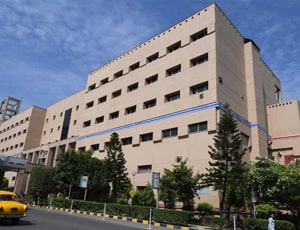
Types of VSD Closure / Repair (Adult) in Apollo Multispecialty Hospitals and its associated cost
| Treatment Option | Approximate Cost Range (USD) | Approximate Cost Range (INR) |
|---|---|---|
| VSD (Overall) | 5612 - 13788 | 464824 - 1089914 |
| Primary Surgical Closure | 5619 - 9127 | 468325 - 752189 |
| Patch Repair | 6854 - 11370 | 561150 - 924870 |
| Transcatheter VSD Closure | 7799 - 13506 | 659185 - 1090809 |
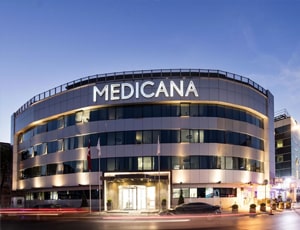
Types of VSD Closure / Repair (Adult) in Medicana Bahcelievler Hospital and its associated cost
| Treatment Option | Approximate Cost Range (USD) | Approximate Cost Range (TRY) |
|---|---|---|
| VSD (Overall) | 5678 - 13732 | 168291 - 406953 |
| Primary Surgical Closure | 5946 - 9052 | 181282 - 280203 |
| Primary Surgical Closure | 7295 - 11023 | 218573 - 342418 |
| Transcatheter VSD Closure | 8509 - 13294 | 250618 - 409184 |
A ventricular septal defect, or VSD, is a condition where there is a hole in the wall between the two lower chambers of the heart, present from birth. It's the most common congenital heart defect and can occur alongside other heart issues. A small hole usually causes minor or no symptoms, but a larger one may require repair to prevent lasting damage and complications.
Ventricular septal defects (VSD) occur in around one-third of 1% of newborns, but it's less likely for adults to be diagnosed since the defect often closes naturally during childhood in 90% of cases. VSDs linked to heart attacks are exceptionally rare nowadays, with less than 1% of all heart attacks being associated with them, thanks to modern treatment methods.
The exact cause of ventricular septal defects (VSD) at birth remains unknown. However, it can be associated with other heart defects, heart conditions, or genetic disorders. The use of specific anti-seizure medications (sodium valproate and phenytoin) or alcohol consumption during pregnancy may potentially elevate the risk of a child developing VSD, although further research is needed to establish these as definite causes.
A rare known cause of VSD is its occurrence as a side effect of a heart attack.
Most ventricular septal defects (VSDs) are too small to pose significant issues, often closing on their own by age 6. In such cases, healthcare providers typically recommend monitoring for symptoms rather than immediate surgery. For moderate to larger-sized VSDs, repair is usually advised. The two primary methods are:
In both cases, the heart tissue eventually grows around the patch or occluder, incorporating it into the heart wall between the ventricles.
The recovery period after repairing a ventricular septal defect (VSD) varies depending on the chosen method. Transcatheter procedures generally result in shorter recovery times, measured in days or weeks. In contrast, surgical interventions require longer recovery periods, measured in weeks or months. Following either procedure, symptoms of a VSD typically decrease or vanish, contributing to improved post-treatment well-being.
Antibiotics will be administered to prevent infections like endocarditis. Regular checkups will follow for a while to ensure that the hole gets closed properly. To prevent blood clots the patient may be given aspirin. Apart from all these, for the first few months, activities will be kept limited till he or she is fit enough to exert more with physical activities.
Ask your healthcare adviser for the best multiple options and choose the one that meets your expectations
Different hospitals have different pricing policy when it comes to the cost of VSD Closure / Repair (Adult) in Lithuania. The top hospitals for VSD Closure / Repair (Adult) in Lithuania covers all the expenses related to the pre-surgery investigations of the candidate. The comprehensive VSD Closure / Repair (Adult) package cost includes the cost of investigations, surgery, medicines and consumables. There are many things that may increase the cost of VSD Closure / Repair (Adult) in Lithuania, including prolonged hospital stay and complications after the procedure.
There are several best hospitals for VSD Closure / Repair (Adult) in Lithuania. The following are some of the most renowned hospitals for VSD Closure / Repair (Adult) in Lithuania:
After VSD Closure / Repair (Adult) in Lithuania, the patient is supposed to stay in guest house for another 21 days. During this time, the patient undergoes medical tests and consultations. this is to ensure that the treatment was successful and the patient us safe to return.
There are certain additional cost that the patient has to pay apart from the VSD Closure / Repair (Adult) cost. The extra charges may start from USD 50 per person.
Some of the cpopular cities in Lithuania that offer VSD Closure / Repair (Adult) include the following:
There are several doctors who are available for telemedicine consultation for patients requiring VSD Closure / Repair (Adult) in Lithuania. The following are some of the best doctors for VSD Closure / Repair (Adult) in Lithuania who are available for video consultation:
| Doctor | Cost | Schedule Your Appointment |
|---|---|---|
| Dr. Rimantas Karalius | USD 140 | Schedule Now |
| Dr. Vaidotas Zabulis | USD 90 | Schedule Now |
The average duration of stay at the hospital after VSD Closure / Repair (Adult) is about 3 days for proper care and monitoring. The doctors team review the patient's recovery during this time with the help of blood tests and imaging scans. Once they feel that everything is on track, the patient is discharged.
There are more than 2 hospitals that offer VSD Closure / Repair (Adult) in Lithuania. These clinics have propoer infrastructure as well as offer good quality of services when it comes to VSD Closure / Repair (Adult) Apart from good services, the hospitals are known to follow all standard and legal guidelines as dictated by the local medical affairs body or organization.
Some of the most sought after doctors for VSD Closure / Repair (Adult) in Lithuania are: